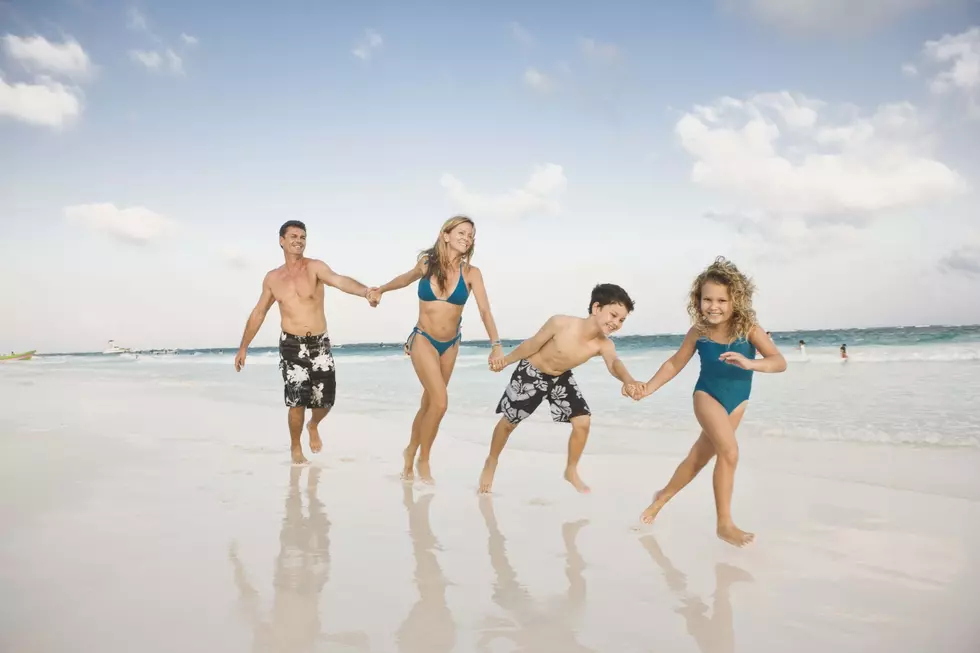
6 Helpful Tips for the Beach this Summer
Swimming in the ocean or pool - it is summer ritual. We use the cool water as a way to escape the heat, but it also gives us the opportunity to relax with friends and family, as well as providing health and fitness benefits. Swimming can act as an easy and fun way to stay active during the hot months of June, July and August.
While we are splashing and having fun, we need to remember basic safety at the pool or beach this summer to protect ourselves and family. According to the www.cdc.gov, 10 deaths occur every day in the United States from drowning, and two out of those ten will be children below the age of 15 years old. It is very important to be vigilant and watching your child when both at the pool and the beach. One common mistake is that each parent assumes the other is watching. Make sure you communicate who is "on duty."
Rip Current Awareness Week is June 5th to the 12th, an effort by the National Weather Service to promote safe swimming at the beach in all instances, especially around rip currents. Rip currents are channels of water flowing away from the shore, pulling anything, even the best swimmers, in its tracks. Before entering the ocean, swimmers should check the conditions and talk to lifeguards on duty with any concerns. Remember to always swim in designated areas with lifeguards on duty. Yet, even with lifeguards on duty, the ocean can still be a very dangerous place.
If you or your child gets stuck in a rip, here are some things to remember: Remain calm and don't fight the current. If you fight the current, you will continue to get sucked out further and you will tire yourself out. Swim parallel to the shore. The channel where the rip current lies will eventually end, and you will be freed. You may still feel like you are being sucked out, but once you are out of the rip it will be a lot easier to swim to shore. Make yourself visible. If you can not make it to shore or feel that you are struggling, make yourself visible to the shore by waving and calling for help. Remember - "wave and yell, swim parallel."
Follow these easy tips and more from www.uscgboating.org to more safely enjoy your summer:
- 1
Never leave your children unattended
Parents should be the first ones able to identify that one of their children is in trouble - they act as the first line of defense. If your young child is in the water, you should be too. For older kids, be as close as possible.
- 2
Read all posted signs
Always follow safety warning and rules. Be sure to teach kids that being safe both in and around the water is very important.
- 3
Wear a life jacket
If you or someone you know is a weak/non-swimmer, wear a US Coast Guard-approved life vest. Also know it’s something not to be embarrassed of; a life vest can very well save your life. "Swimmie" which are flotation devices used on kids arms can do more harm than good.
- 4
Don't drink alcohol
Always avoid alcoholic beverages before or during activities around water, such as swimming, boating or water-skiing. Never drink alcohol when supervising young children, and also teach teenagers the dangers of drinking when around in and around the water.
- 5
Protect your skin
Limit the amount of direct sunlight you’re in from 10:00 a.m. to 4:00 p.m. if possible, and be sure to use sunscreen with an spf of at least 30. Also, its recommended sunscreen is reapplied once at least every two hours.
- 6
Never go alone
Always go with a buddy, never go swimming alone - especially in the ocean. It can take just moments for a drowning victim to go under, so every second counts in preventing a death or disability. Make sure you always swim in water protected by a lifeguard.
More From Cat Country 107.3










